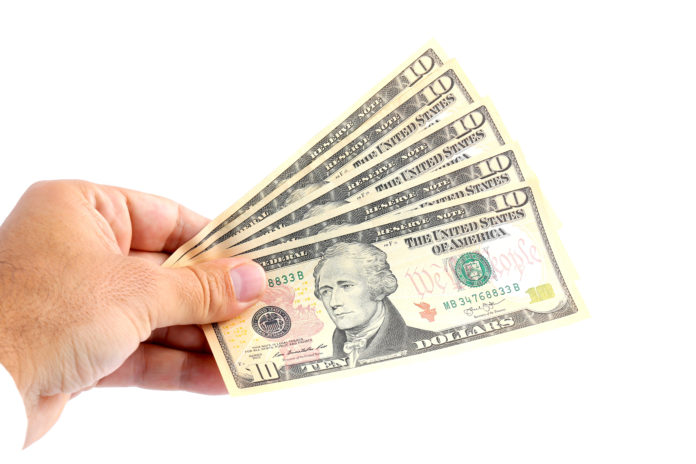He was one of the Founding Fathers of the United States, a brilliant legal scholar, military commander and the founder of America’s financial system. As the first secretary of the treasury, he was the main architect of President George Washington’s economic policies. His name, in case your American history is rusty, was Alexander Hamilton.
And, at least if University of Oklahoma Professor Andrew Porwancher is correct, the man on the $10 bill was Jewish.
Who knew?
Well, no one, at least not until the speculators amassed their arguments for the contention. And even now, though, after the evidence has been proffered, Mr. Hamilton’s reputed membership in the tribe is not exactly established.
But the evidence presented is certainly intriguing.
Nevis is a small Caribbean island that, in the 1700s, along with the neighboring island of St. Kitts, comprised a British colony that boasted a large Jewish community. The islands’ Jews came mostly from Brazil, from which Jews had been expelled by the Portuguese (as their antecedents had been from Portugal itself). At its height, the Jewish community constituted around 25% of the islands’ total population. Nevis was Alexander Hamilton’s birthplace.
And as a boy, it seems, Alexander was tutored by a Jewish schoolmistress. His son testified that his father had told him with a smile that he could recite the Aseres Hadibros in Hebrew.
Hamilton’s mother, Rachel Faucette, had been divorced from her first husband, a man with the surname “Lavien.” Might it have really been Levin or Levine? And might Rachel have undergone a conversion to Judaism? Anything’s possible, of course, even the highly improbable.
After the couple went their separate ways, Rachel found a new partner, a Scotsman named James Hamilton; Alexander was their son. Had his mother indeed been halachically converted, that would make Alexander a Jew (although, if there hadn’t been a valid get from Mr. Lavien, a mamzer).
What isn’t speculation, though, is that Hamilton had what biographer Ron Chernow called “a life-long reverence” for the Jewish people, whose achievements Hamilton saw as the result of Divine providence
“The state and progress of the Jews,” Hamilton wrote, “from their earliest history to the present time, has been so entirely out of the ordinary course of human affairs; is it not then a fair conclusion, that the cause also is an extraordinary one—in other words, that it is the effect of some great providential plan?
“The man who will draw this conclusion,” he continued, “will look for the solution in the Bible. He who will not draw it ought to give us another fair solution.”
Hamilton, moreover, notably kept a distance from church most of his life, unlike most of his contemporaries, and had close ties with the Mendes Seixas family of New York’s Shearith Israel congregation.
But the assertion that Hamilton was Jewish in the end depends on the likelihood that Rachel’s first husband was a Jew and that she converted before marrying him, for neither of which any evidence exists.
That Alexander was well-disposed toward the Jewish people, though, is, as above, uncontestable. As is the fact that another Founding Father, Benjamin Franklin, helped fund the construction of the Mikveh Israel synagogue in Philadelphia. And that George Washington, who became the first president of the US, famously wrote, in his letter to the Touro Synagogue in Newport, Rhode Island: “May the children of the stock of Abraham who dwell in this land continue to merit and enjoy the good will of the other inhabitants, while every one shall sit in safety under his own vine and fig tree and there shall be none to make him afraid.”
Those sentiments blessedly lie at the foundation of the country in which many of us are fortunate to spend this, hopefully last, stop in galus.
Whether or not Alexander Hamilton was a Jew.
Personally, I find the Hamilton-as-Jew theory, predicated as it is entirely on surmisings, unconvincing.
Yet, when I have occasion to walk a block north of Agudath Israel’s offices on Broadway in Lower Manhattan, I can’t help but glance at the 17th century graveyard, visible from the street, where the man on the $10 bill is buried, and wonder…





















